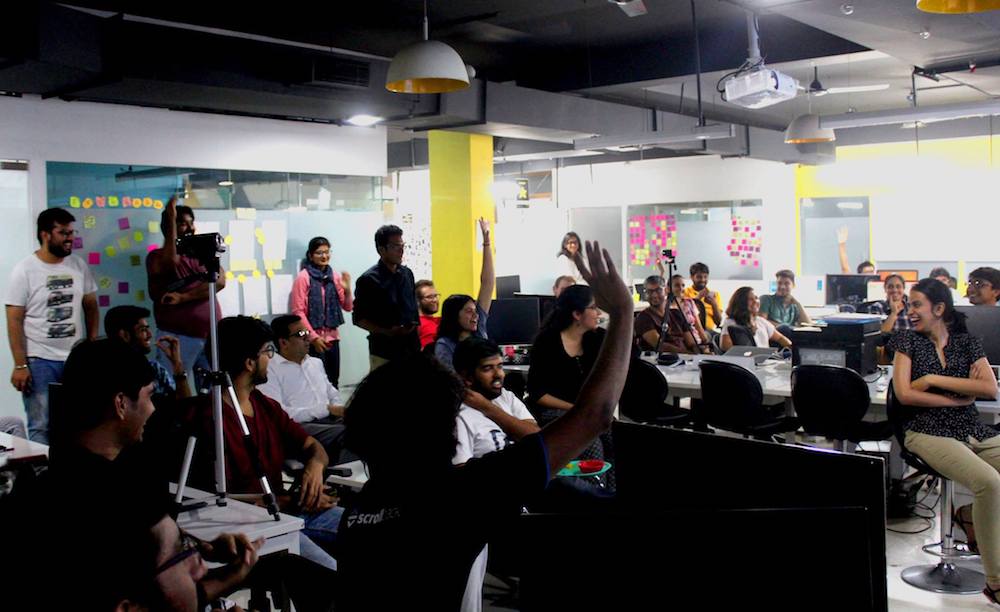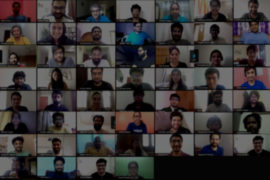We are always thinking deeply about the “dent” Atlan could leave on the universe. We’re asking ourselves, “What would it take to create a company that would have relevance for hundreds of years?” We are moving rapidly from our childhood days into adolescence — an interesting time, where one typically has a strong sense of self and is now battling to grow into the adult one is meant to be.
In the quest to shape our future self, we began reading about companies that inspired us — Google, Airbnb and more recent upstarts like Stripe and Buffer. All of these companies, however, are fairly new. (Google was launched only in 1998.) So we looked into companies like McKinsey, Unilever and IBM that have been around for much longer. What did they do to ensure sustained growth and longevity?
Most companies that survive the tests of time and tide are built on a strong moat — a competitive advantage enjoyed by first movers in a particular industry. For example, back in the day, Unilever had an enviable distribution channel; IBM built a unique IP. McKinsey, however, proved to be the most fascinating case study. As a management consulting, people-centric business, McKinsey lacked the traditional moat, and yet it achieved unquestionable industry dominance. Here is a firm that exited unscathed from the Enron collapse and counts among its clients some of the world’s leading Fortune 500 companies.
What is the McKinsey advantage?
How does McKinsey attract top dollar from the world’s leading CEOs, all for a team that could be as small as 4-5 associates who are usually fresh graduates from top business schools? Dig deeper, and there are two key aspects that set McKinsey apart from the rest. Most obviously, one is the promise to find a unique solution to client problems. But the other is more important — their commitment to having a team of the brightest minds, which are practically manufactured through company training and grooming.
This is where McKinsey has created one of the most formidable moats the world has seen — a talent factory that is almost impossible to replicate. Every year, around 2,200 out of 201,000 graduate applicants (most of whom hold expensive MBA degrees) are made an offer to join the firm. Growth is rapid; often in just a few years, many ambitious 20-year-olds make the jump to leadership positions in McKinsey’s Fortune 500 client companies. According to an article on the company website, over 450 former McKinsey consultants are running billion-dollar-plus companies around the world. Examples include Hames Gorman, CEO of Morgan Stanley, and Lou Gerstner, who is credited with turning around IBM.
The draw to McKinsey, however, is much more than the opportunity for future growth. The firm inspires a sense of pride and belonging among the employees, which translates into lifelong loyalty among the alumni. This loyalty creates a strong and enviable network, and many ex-employees hire from this network at their new workplaces. In fact, McKinsey enables this by allowing recruiters to post opportunities through their official alumni networks. All in all, McKinsey offers the dream job for the ambitious, a training ground for the successful, and a sure-shot way of ending up as the CEO of a Fortune 500 company.
To create this formidable brand, McKinsey spent decades building the talent that is their competitive advantage. When James McKinsey founded the firm, he was already a well regarded academic. His writings created a strong philosophical foundation that drew like-minded people into the organization. When competition increased and the quest for talent proved a challenge, McKinsey entered into a recruiting partnership with Harvard Business School (HBS).
The HBS–McKinsey partnership was a path breaker in those early days, when business schools struggled to gain recognition, and it proved beneficial for both parties. Harvard graduates accounted for two out of five McKinsey consultants by the mid-1960s. In the 1970s, the McKinsey Knowledge Center was established as a separate institution that not only helped build the company’s brand but also facilitated public access to their insights, creating greater credibility in the industry. (Source: The Firm.) These are just a few of the many initiatives McKinsey spearheaded to attract talent. From just 15 consultants in 1930, McKinsey is 14,000 consultants strong today.
The “people” foundation that McKinsey has built — the ability to attract, recruit and groom talent such that it becomes your strength — is breathtaking. At Atlan, we have always believed that great companies are, first and foremost, built by great teams. As founders, we spend an inordinate amount of time building a great team. We don’t just stop with recruiting great talent, but also create an enabling environment for exponential growth once someone enters the company. The McKinsey case reinforces our belief that our people are indeed our greatest strength. They are our biggest asset, our biggest moat and our biggest competitive advantage.

What would it take to recreate the McKinsey advantage in the 21st century?
Recreating McKinsey’s success for talent recruitment in today’s times has proved to be a challenge. The talent pool today, particularly the Millennials, are often multi-skilled, increasingly seek fulfillment in their work, and are interested in roles that may not fit into traditional job descriptions. Companies (like ours) too seek to create teams filled with multi-dimensional people who don’t fit into traditional job descriptions. Yet most recruiters continue to rely on traditional methods for recruitment. According to ManpowerGroup’s 2018 Talent Shortage Report, the global talent crunch is at an all-time high — 45 percent of the employers participating in the survey struggled to find the right talent for vacant positions.
In order to succeed, today’s recruiters and companies need to find innovative ways of reaching their niche talent. For inspiration, we looked at the way SaaS sales teams operate.
The SaaS model of selling software is inherently more customer-centric because customers can cancel their subscriptions at any time. Today, 57% of potential buyers have made a buying decision before they speak to anyone on a team. This has led to companies investing in content marketing or, as Hubspot coined, “Inbound Marketing” — building content that adds value to potential customers and builds trust and credibility, long before someone is ready to make a purchasing decision. In other words, success in sales is no longer dependent on the salesman’s ability to have customers sign a long-term contract.
Companies are thus investing in customer success representatives, who focus on ensuring customers are “successful” in using their products. Customer success has become an important force for creating happy customers — thus reducing churn, increasing revenue per account, and bringing in new customers via word of mouth and referrals. This relentless focus on adding value to customers seems to be working. Companies such as Slack have grown exponentially, going from $0 to $4B in revenue without traditional salespeople.
This brings us to a defining question: If companies can reorganize sales teams to meet the needs of the new-age customer, why can’t we organize our talent teams to meet the needs of the new-age workforce?
You might be wondering, how would this work? The SaaS sales team funnel looks like this: add value to customers through online content (“generate leads”), inform and engage through webinars and newsletters (“nurture leads”), reach out to prospective customers via social channels (“outbound sales”), and manage the pipeline with discipline (“sales process”). After that, the customer success team takes over to finally convert customers and ensure customer satisfaction.

We believe that the new-age talent team funnel will look similar, with one key difference — replace the customer with the employee.
The new-age talent team will need people of a variety of different skill sets:
- Talent Marketers who focus on the top of the funnel — distribute content via online platforms and manage the talent brand
- Talent Evangelists who engage with the community directly through events and newsletters
- Recruiters who scout for talent and build long-lasting relationships with potential candidates
- Pipeline Managers who manage the inbound funnel to ensure pipeline speed and quality
- People Operations folks who are responsible for the candidate’s journey once an offer is accepted, managing functions like onboarding and growth journeys
As we grow, we’ve been pushing to make sure we support the people filling the seats in our office from day one and beyond. Here’s what we fixed in our onboarding and feedback systems.
We believe the talent industry is on the brink of a revolution, and companies that get this one key function right will end up winning the talent war in the long run. Behind every great company is a great team. This is at the heart of our vision for the Atlan we want to build over the next decade, a company with people at its core. With this in mind, we recently started building a new kind of talent team — a team that brings together our best marketers, recruiters and people operations folks. This talent team will manage the entire journey of a prospective Atlan teammate, right from the first time they hear about us to when they become alumni.
Are you a marketer, recruiter or evangelist who is not satisfied with the status quo? A builder who is searching for an opportunity to leave a legacy? If you answered yes, then drop me a line at [email protected], or check out our jobs site to see our open positions.
P.S. As a personal side project, I am working on a collaborative content series to put together learnings from companies who are at the forefront of innovating for today’s talent revolution. If you know of great recruiters, talent marketers or even founders who are deeply invested in recruiting, I would love to speak with them! Please connect me to them at [email protected].
Header photo by Kees Streefkerk on Unsplash.







